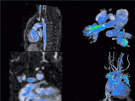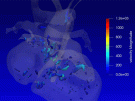Surgeon says treatment silos in childhood obesity need to end

An editorial in one of the top-ranked pediatric journals — Lancet Child & Adolescent Health — asserts that researchers studying obesity in children and adolescents should stop comparing medication versus bariatric surgery to see which is more effective.
An editorial in one of the top-ranked pediatric journals — Lancet Child & Adolescent Health — asserts that researchers studying obesity in children and adolescents should stop comparing medication versus bariatric surgery to see which is more effective.
Evan Nadler, M.D., director of the Child and Adolescent Weight-loss Surgery Program at Children’s National Hospital, writes that patients don’t want or need the answer to that question. Instead, the two treatment approaches should work together. He cites the field of oncology, where medicine and surgery work hand-in-hand as a comprehensive treatment plan that is individualized for each person’s unique condition.
Why it matters
“The obesity field has long been evaluating isolated interventions. There is a battle between those who favor medical therapy and those who favor surgical therapy,” Nadler writes. “Would it not make more sense for patients if we consider all available options until the desired weight loss is achieved rather than be a staunch advocate of the therapy that we personally like the best?”
According to Nadler, the American Academy of Pediatrics’ 15-year-process to release their first guidelines for treatment of childhood obesity is a consequence of these same silos.
“If medical and surgical oncologists figured out how to work together decades ago, why is it taking so long for practitioners who treat obesity to join forces and use combination therapy for their patients?”
Read the editorial in the Lancet Child & Adolescent Health.











